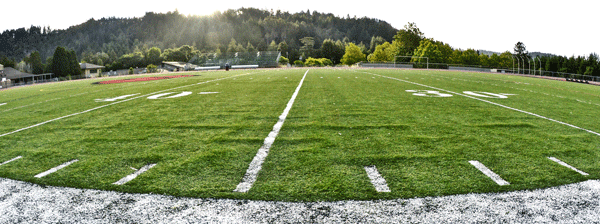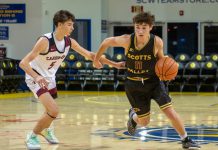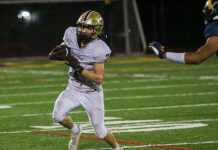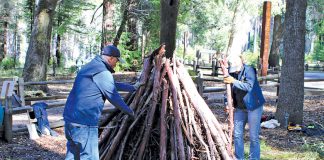
By the year of 1984, almost two-thirds of the National Football League’s teams played on artificial turf.
The growing concern for increased injuries, player’s preference of the natural grass fields, and an easiness of lawn-growing — due to the progress of gardening science — has caused the numbers of teams playing on artificial turf to dwindle to just about one-third of the teams last year.
FIFA — the world’s soccer governing body — outlawed artificial turf altogether in men’s soccer. The Women’s World cup, which recently finished in Canada, was played solely on artificial turf, and broadcasters for one of the games mentioned that while the air temperature was almost 100 degrees, the turf’s was above 160.
There are strict precautions: NFL mandates testing fields before every game – primarily to detect if a playing surface is too hard and poses an increased concussion risk for players. It’s called Gmax level — the amount of force between the weight of human head and the field at impact. It has to be way below 200 because at that level the human skull can fracture.
College football is much less into these tests, and fields for youth sports hardly ever get tested.
San Lorenzo Valley High School has a dual level of concussion prevention; underneath the artificial grass is a layer of Brock-brand sheets of shock absorbing pads, on top of that are thousands of pounds of pulverized rubber from old tires.
The rubber has to be replenished regularly — and the SLV district has the supplies and equipment to do that — because when crumbed rubber levels get depleted from their original depth, it results in a dangerously hard playing surface, with some Gmax readings above 250.
And there are possible carcinogens in the pulverized rubber, which only recently started getting attention and testing.
But there’s more than that. Originally praised as completely maintenance-free, the fields also need to be sanitized and cleaned regularly due to the blood, sweat, saliva, cleats, screws, and other debris, all to be taken care of by the field-grooming crews. Hardly maintenance-free.
In light of this, recent drive to convert the Scotts Valley High School football field into artificial turf should perhaps require a pause. The running track’s fine and dandy, but keeping grass on the field, with modern gardening techniques, might be a wiser choice, unless one believes in maintenance-free Astroturf (at the expense of athletes’ health). For those believers — there’s a bridge for sale in New York.
On the bright side, the resurfacing of the running track at San Lorenzo Valley HS was finished last week. It looks better than new and will cost the district just $100,000, matched by the same amount from the annual Wharf-to-Wharf run’s fund-raising profits.
“When the new school year starts, we’ll train the athletic departments for the best way to use it,” said Erik Slaughter, Director of the SLVUSD maintenance department.
The resurfacing was done by Beynon Sports Surfaces Company and should last for another ten years.
“It’s a faster track, due to a different material used for resurfacing it. Our athletes love it,” said Rob Collins, SLVHS track and field head coach. “The jumps area behind the football field’s end-zones that used to be concrete, was replaced with the astroturf and jumpers love that, too. Plus, there are brand new track markings for relays, 1-mile, 1600-meters, 3200-meters and more. It’s a really great improvement.”










